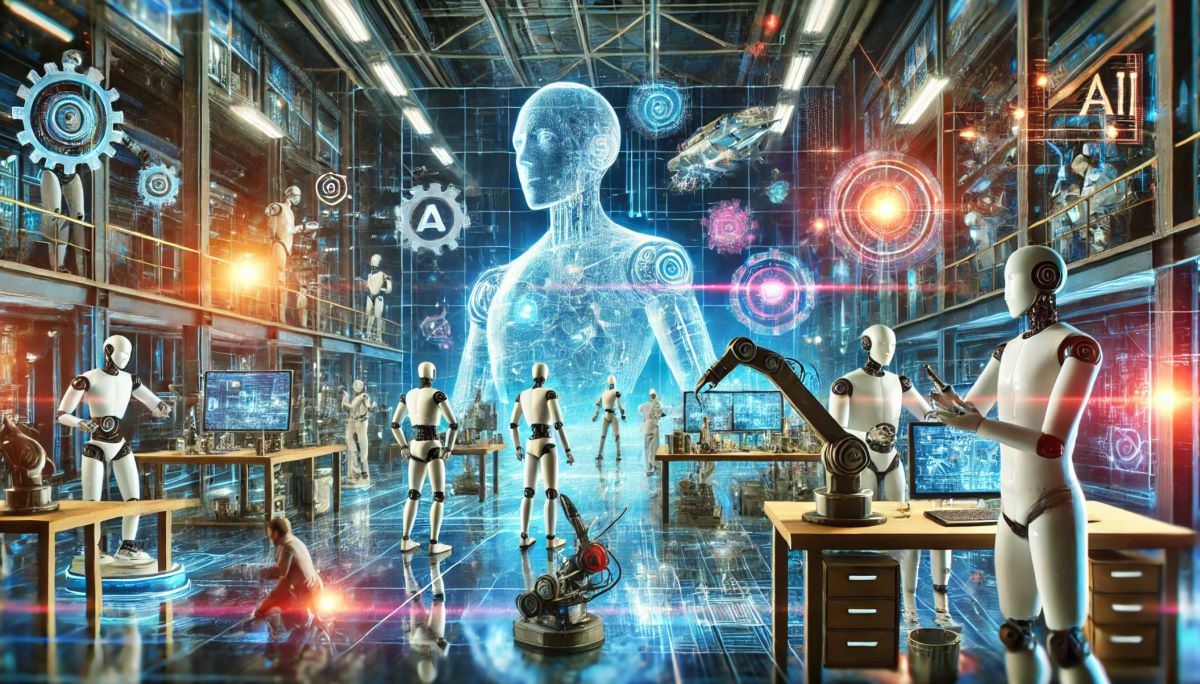The fusion of artificial intelligence (AI) and robotics is revolutionizing various industries, from manufacturing and healthcare to transportation and entertainment. By integrating AI, robots are becoming more intelligent, autonomous, and capable of performing complex tasks with precision. This article explores how AI is enhancing robotics, the key technologies involved, and the future implications of building smarter machines.
1. Introduction to AI and Robotics
Robotics involves the design, construction, and operation of robots, which are machines capable of carrying out tasks autonomously or semi-autonomously. AI, on the other hand, refers to the simulation of human intelligence in machines. When combined, AI enables robots to learn from their environment, make decisions, and perform tasks that were previously impossible or impractical.
2. Enhancing Robotics with AI
AI enhances robotics in several key areas, including perception, decision-making, and learning. These capabilities enable robots to perform tasks more efficiently and adapt to changing environments.
2.1 Perception
Perception involves the robot’s ability to gather and interpret sensory information from its surroundings. AI algorithms, such as computer vision and natural language processing, enable robots to understand visual inputs, recognize objects, and comprehend spoken commands.
2.2 Decision-Making
Decision-making is the process by which robots determine the best course of action based on the data they perceive. AI techniques, such as machine learning and reinforcement learning, allow robots to evaluate different scenarios and make informed decisions in real-time.
2.3 Learning
Learning enables robots to improve their performance over time through experience. AI-driven robots can use data from previous tasks to refine their algorithms, learn new skills, and adapt to new situations without explicit programming.
3. Key Technologies in AI and Robotics
The integration of AI into robotics relies on several key technologies that enable robots to perceive, decide, and learn effectively.
3.1 Machine Learning
Machine learning (ML) is a subset of AI that focuses on developing algorithms that allow machines to learn from data. In robotics, ML is used for tasks such as object recognition, path planning, and predictive maintenance.
3.2 Computer Vision
Computer vision involves the use of AI to interpret and understand visual information from the world. Robots equipped with computer vision can recognize objects, navigate environments, and perform tasks that require visual inspection.
3.3 Natural Language Processing
Natural language processing (NLP) allows robots to understand and respond to human language. This technology enables robots to interact with humans more naturally and perform tasks based on verbal instructions.
3.4 Reinforcement Learning
Reinforcement learning (RL) is a type of ML where agents learn to make decisions by receiving rewards or penalties based on their actions. In robotics, RL is used to teach robots how to perform complex tasks through trial and error.
4. Applications of AI-Enhanced Robotics
AI-enhanced robotics is transforming various industries by enabling robots to perform tasks with greater efficiency and accuracy.
4.1 Manufacturing
In manufacturing, AI-driven robots are used for tasks such as assembly, quality control, and predictive maintenance. These robots can work alongside humans, increasing productivity and reducing errors.
4.2 Healthcare
In healthcare, robots equipped with AI are used for surgery, patient care, and diagnostics. Surgical robots can perform minimally invasive procedures with precision, while AI-powered diagnostic tools can analyze medical images to detect diseases.
4.3 Transportation
In transportation, autonomous vehicles use AI to navigate roads, avoid obstacles, and make real-time decisions. Drones and delivery robots are also becoming more prevalent, offering new solutions for logistics and last-mile delivery.
4.4 Service Industry
In the service industry, robots are being deployed for tasks such as customer service, cleaning, and food delivery. AI enables these robots to interact with customers, navigate dynamic environments, and perform repetitive tasks efficiently.
5. Challenges and Future Directions
Despite the significant advancements in AI and robotics, several challenges remain. Addressing these challenges will be crucial for the future development of smarter machines.
5.1 Ethical and Social Implications
The integration of AI into robotics raises ethical and social concerns, such as job displacement, privacy, and the potential for misuse. It is essential to develop policies and guidelines to ensure the responsible use of AI-driven robots.
5.2 Technical Limitations
Technical challenges, such as improving battery life, enhancing sensor accuracy, and developing more robust algorithms, need to be addressed to make robots more reliable and versatile.
5.3 Human-Robot Interaction
Ensuring safe and effective interaction between humans and robots is crucial. Research in human-robot interaction aims to develop intuitive interfaces and enhance the collaborative capabilities of robots.
6. Conclusion
The combination of AI and robotics is creating smarter machines that can perform a wide range of tasks with unprecedented efficiency and accuracy. As these technologies continue to evolve, they will transform various industries, improve productivity, and enhance the quality of life. However, addressing the ethical, social, and technical challenges will be essential to ensure the responsible and beneficial use of AI-enhanced robotics. By understanding and embracing these advancements, we can build a future where intelligent robots work alongside humans to solve complex problems and achieve new heights of innovation.

